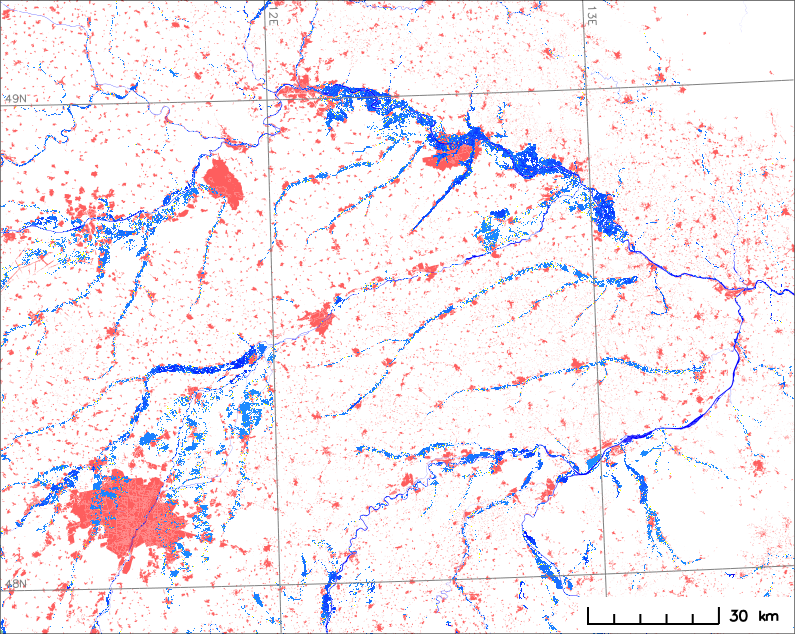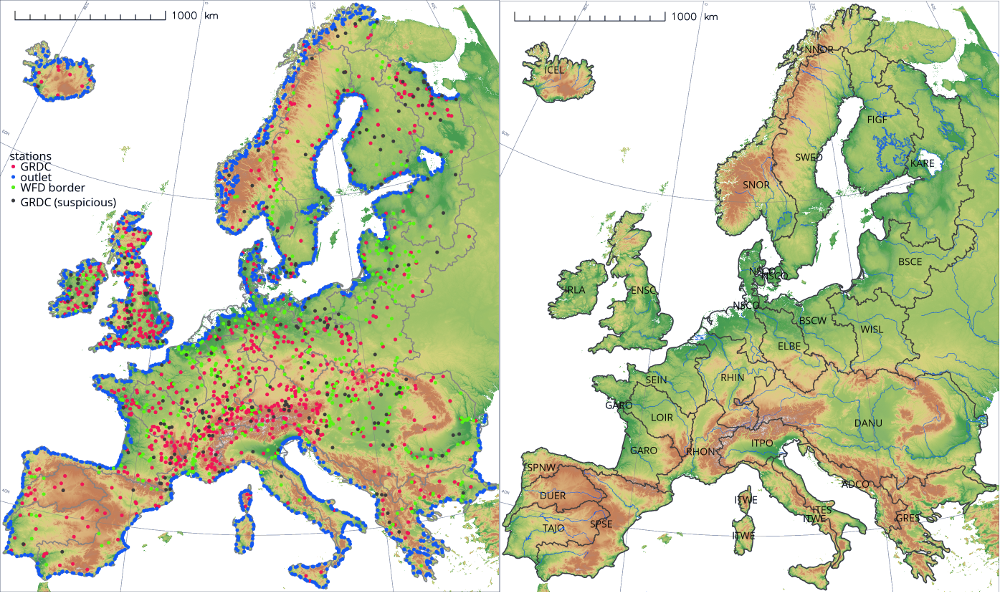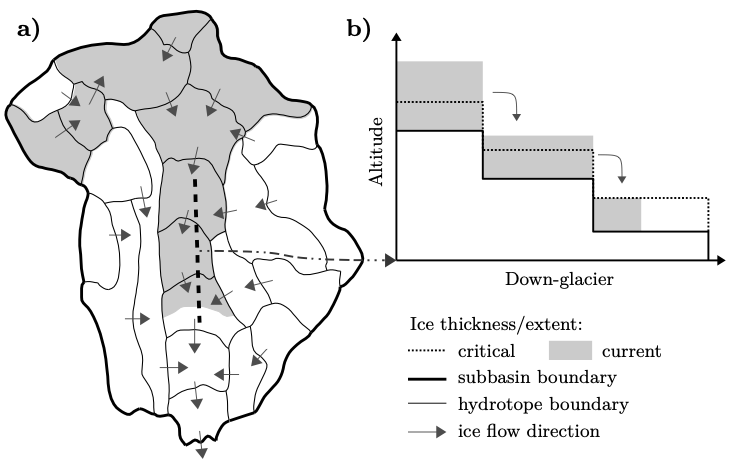Research
High-resolution, continental-scale hydrological modelling
As part of the Hydroclimatic Risk group at PIK, I lead the development of continental-scale applications of our high-resolution, eco-hydrological model SWIM. While the model is traditionally applied in single catchments, methods and datasets need to be developed to upscale the model to arbitrarily large domains. The overarching aim is to implement all catchment processes implemented in SWIM at regional scales without losing spatial detail. Model calibration is a major challenge, which I accomplish by employing multi-objective, evolutionary algorithms.

A 100-year flood zone (blue) with residential areas (red) in south-eastern Germany (bottom left is Munich) simulated by a stochastic CaMa-Flood model run.
Flood risk under climate change
River floods are one of the most detrimental natural catastrophes to human livelihoods and physical assets. I am working on building high-resolution, regional models that can quantify this risk for historical, current and future climatic conditions. I cooperate with various leading re/insurance companies to design and validate the models in research and operational settings. My main objective is to make flood risk modelling more transparent und future-proof by building on PIK's experience in climate impact research and modern, open-source technologies (such as OASIS-LMF).
Relevant publications: Hattermann, Wortmann et al. (2018), Wortmann et al. (2014)
Regional glaciohydrological modelling
During my PhD I integrated a glacier dynamics model into the semi-distributed model SWIM to enable climate change impact assessments of mountainous, highly glacierised catchments. The model enables an efficient representation of ice dynamics of individual glaciers at regional scales and assess changes in ice cover/volume and meltwater changes.
Relevant publications: Wortmann et al. (2018), Wortmann et al. (2019)

